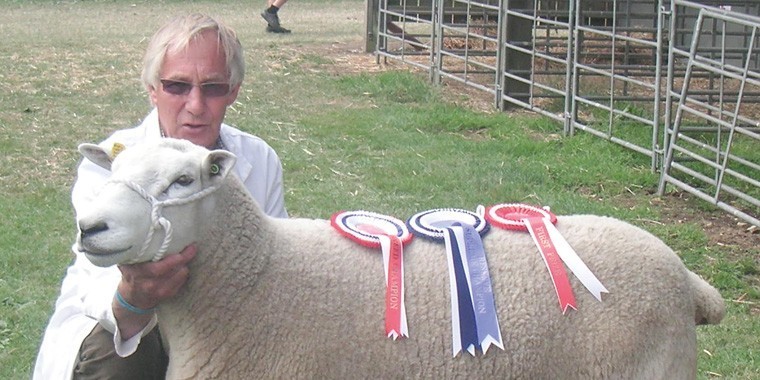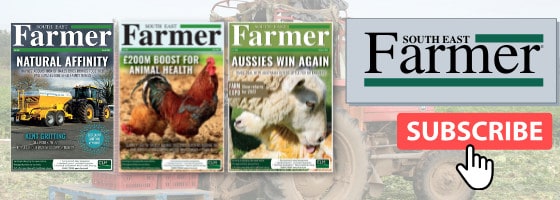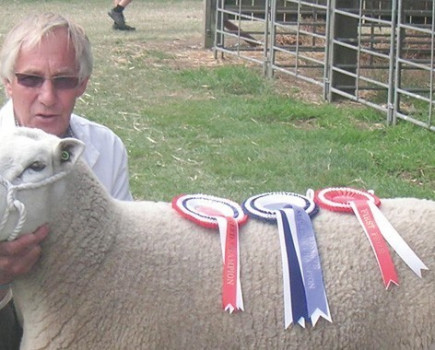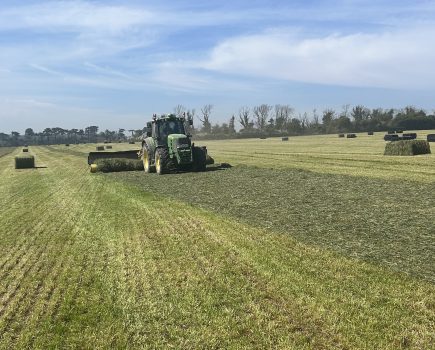Almost there. At the time of writing, except for a single Herdwick ewe, lambing is done. The hanger-on comes as no surprise. Being so fiercely independent, they do what they do as and when they want to do it; the laggard has been the last to lamb for the past few years, a title she seems determined to retain.
The finale of this year’s lambing is certainly looked forward to with rather more relish than its start, which was attended by a degree of foreboding following the dog attack in mid-February; a feeling of inevitability that there would be a consequential impact on lambing and a fear that a number of them, although they had not aborted, would be carrying dead lambs.
Sadly, this was a correct assumption, and we started with a run of stillbirths, a rare occurrence in our Lleyn, both entire litters and deliveries with one live and one or more stillborn. To further complicate things we experienced significantly more malpresentations than we would ordinarily expect, rather more small lambs and an exceptional divergence in the size of some litter mates; all, I suspect (know), due to substantial disruption to placentas and nutrient supply during the attack. Not knowing quite what to expect in terms of lamb deliveries certainly generated considerable additional stress when checking the ewes at the start of the season.
Fortuitously, as lambing progressed, having been through the full spectrum of problems, things did, eventually begin to settle down and improve. With all the Lleyn producing within 16 days, lambing went quickly; considering what the ewes had endured we do have some good, strong lambs on the ground, albeit with some rather oddly paired sets of twins. To their eternal credit, the ewes have performed well, have an abundance of milk and are doing their lambs very well so far; thankfully almost all of the lambs born alive are still with us, even though some are really quite small, with a mortality of just 3%.
Unfortunately, the net result has been that lamb numbers are substantially adrift from where they should be, with our lambing percentage taking a huge knock from its usual 200%-ish. That said, I am aware that the impact could have been considerably worse, and I am thankful for the numbers we do have. Luckily, the Herdwick ewes were not involved in the dog attack and, to add insult to injury, look set to out-perform the Lleyn this season, something that I’m sure the boss (the Herdwick are her pride and joy) will not allow me to forget for some considerable time.
Sadly, we are not alone, with dog attacks and the consequential impacts on both sheep and sheep keepers are a daily reality for sheep keepers across the country. We lost the final natural predator on sheep when John Corbett and his hunters killed the last English wolf in 1290, only to be supplanted now, more than seven centuries later, by out-of-control dogs and irresponsible owners.
The law in relation to sheep worrying by dogs was significantly enhanced in 2021 in Scotland, where owners of dogs that worry sheep may now be fined up to £40,000 and/or face a prison sentence of up to 12 months. All we have here is a proposed amendment to the Dogs (Protection of Livestock) Act 1953, which simply gives the police greater powers of seizure, an amendment that has, for almost a year, made little progress through Parliament; our legislators really do not seem to be taking the issue very seriously.
Although lambing went better than expected, grass availability is now giving some cause for concern. March may have provided good lambing weather, particularly for those lambing outside, but a run of cold nights has kept soil temperatures down, hindering spring grass growth, particularly after an autumn and winter during which grass took a bit of a battering. Generally, by mid-March we would have a decent bite of grass for the ewes to lamb onto, plus a bit in reserve, but now, even into April, supplies are rather tight; we do have grass in front of the ewes, but it needs careful grazing management.
Now, with the sunniest March since records began and a significant lack of any meaningful rainfall, things are beginning to dry up a bit, providing further impediment to grass growth. Again, we are not alone; I had a conversation with a fellow breeder in North Wales last week and, surprisingly, he is in just the same position, chasing grass around the farm and now, unusually, considering the strategic use of some creep feeding as a buffer, taking some of the pressure off the grass and the ewes to husband grass supplies and avoid excessive loss of ewe body condition.
The past 12 months have generally not been kind to sheep, and we could all do with a bit of a respite, a decent drop of rain even, but I will certainly be holding a bit of creep feed in reserve.
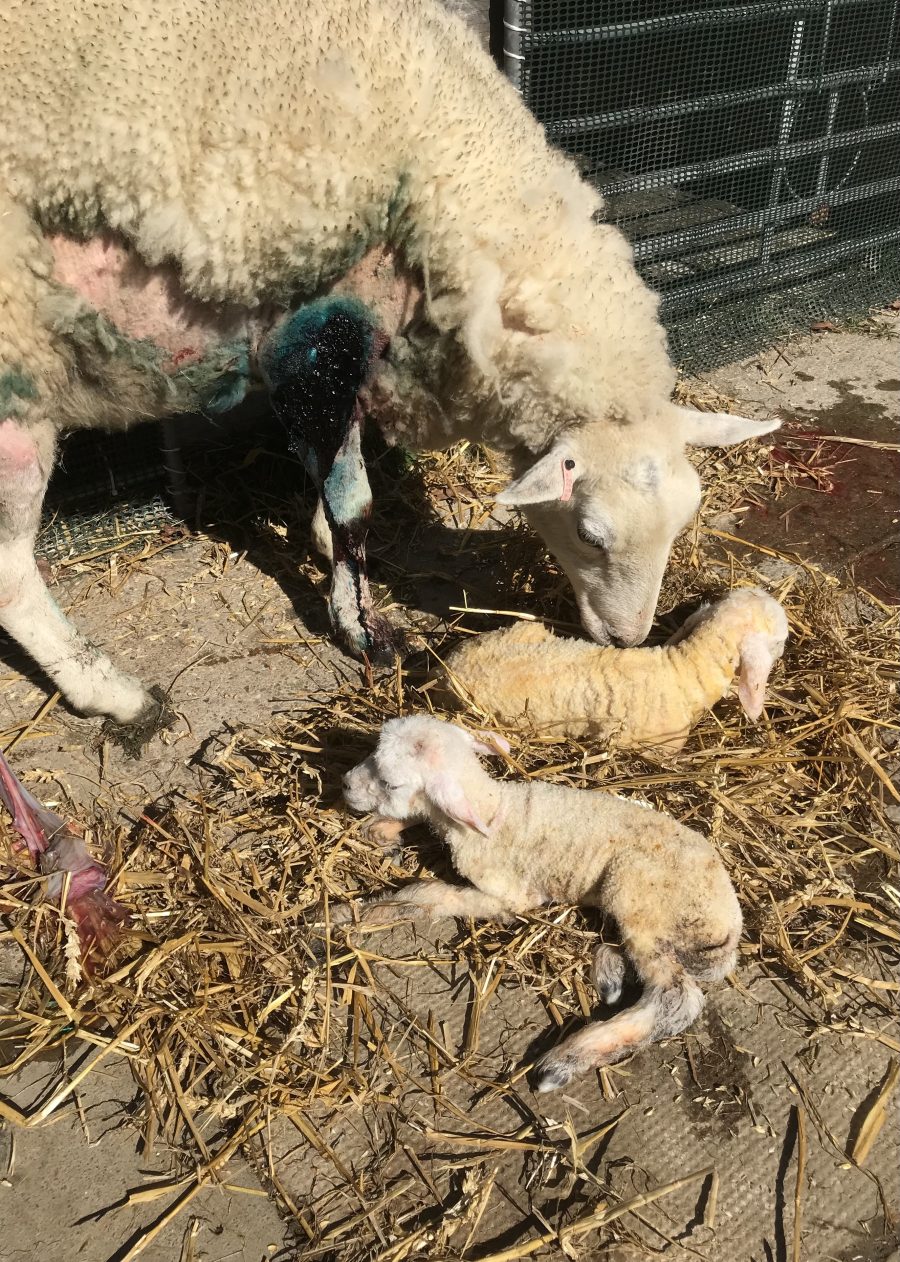
Testament to the hardiness and resilience of sheep; still carrying her battle scars from the dog attack, she still managed to produce a good set of twins, even if one is a bit of a rabbit
For more like this, sign up for the FREE South East Farmer e-newsletter here and receive all the latest farming news, reviews and insight straight to your inbox.

